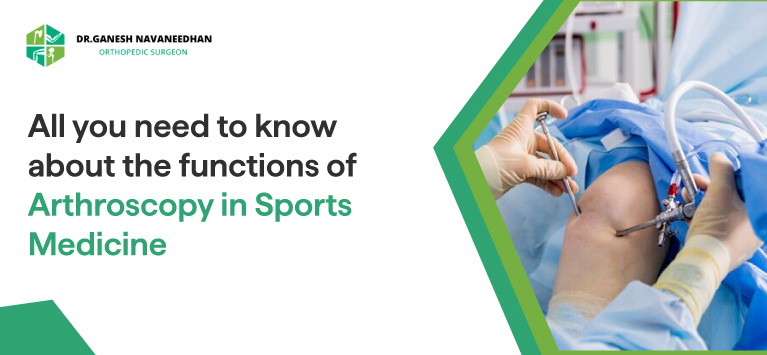- +91 8848509072
-
Sasthamangalam, Trivandrum
Sasthamangalam, Trivandrum

The history of arthroscopic surgery started in Japan and spread worldwide. In the past, the performance of the equipment was still lacking compared to now, and it took time to spread widely. In recent years, along with advances in equipment, the development of arthroscopic surgery in developed countries has been remarkable, and its indications are expanding not only for knee diseases but also for shoulder joints, elbow joints, hip joints, and ankle joints. It can be said that there are many indications of diseases in the field of sports surgery.
Arthroscopy is a minimally invasive surgical intervention on the joint, in which the diagnosis and treatment of disease and damage is performed using an arthroscope, an endoscopic medical instrument inserted into the joint through a small incision. It comprises a small magnifying lens and a lighting system using light fiber optics.
The term “arthroscopy” comes from two Greek words, “arthro” and “skopia,” which means “to look at a joint.” Arthroscopic surgery can be performed to diagnose and treat many orthopedic disorders of various joints (most commonly the knee and shoulder), including meniscal tears, anterior cruciate ligament reconstruction, and resection of damaged intra-articular structures. The use of this surgical technique is possible at almost any age.
In addition to the above, arthroscopes are also indicated for shoulder and knee diseases. Arthroscopy is also useful for sports injuries of elbows, hips, and ankles, and its indications are expanding.
In order to respond to the needs of patients for the above diseases, doctors are actively promoting arthroscopic surgery, focusing on acquiring the latest knowledge and techniques.
Endoscopic interventions can be performed under local, regional, or general anesthesia. The leading advantage of arthroscopy compared to the traditional open surgical technique is the absence of the need for wide access to the joint cavity. For example, knee joint arthroscopy can be performed through only two small incisions: one for the arthroscope and the other for special surgical instruments, which are smaller than traditional ones. During the operation, the surgeon observes the surgical field on a video monitor in an enlarged form, which significantly increases the accuracy of manipulations. It is filled with a special sterile liquid to improve visualization and expand the joint cavity.
Many arthroscopic interventions are performed on an outpatient basis without lengthy preoperative preparation. They significantly speed up the rehabilitation time, improve treatment outcomes due to minimal trauma, and reduce the likelihood of postoperative arthritis. This is especially important for professional athletes after various knee joint injuries in need of quick rehabilitation.
Unlike traditional arthrotomy, a minor injury to the articular tissues allows a much earlier start of muscle mobilization, restores movement in the joint, and supports the limb. Many patients do not need pain medication and return home the day after surgery. Also, after arthroscopic interventions, an excellent cosmetic result is noted.
Precision is another factor that makes arthroscopy so effective. Thanks to the high-definition camera and real-time images, the surgeon can examine all the body structures in detail and perform precise and specific interventions according to the needs of each patient. This reduces the chance of unnecessary procedures and helps improve long-term results.
In addition, arthroscopy allows for faster recovery and an earlier return to normal activities. Due to the small incisions and less surgical trauma, patients experience less pain and smoother rehabilitation.
The combination of these advantages allows the patient to go home the same day of the intervention and resume their usual activities in a matter of a couple of weeks.
Arthroscopy revolutionizes sports medicine with minimally invasive joint interventions. From its origins in Japan to global adoption, this technique diagnoses and treats diverse orthopedic disorders. Shoulder issues like rotator cuff tears and recurrent dislocations find solutions, while knee problems, including meniscus injuries and ACL ruptures, are effectively addressed. Arthroscopy’s benefits are abundant: outpatient procedures, quicker rehab, minimal trauma, and enhanced accuracy. For those seeking quality care, entrust reputable doctors who specialize in arthroscopy. Prioritize your joint health and swift recovery with the expertise and advancements in this remarkable field.
Copyright © 2024 Dr. Ganesh Navaneedhan. All Rights Reserved. | Designed By Harvee healthcare